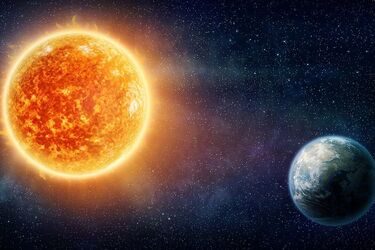Scientists discover that the Sun may be much smaller than they previously thought

The star at the center of our solar system, the Sun, may be much smaller than previously thought. Astronomers have made a discovery that could affect our understanding of our nearest luminary.
The research report, which is currently under peer review, shows that the Sun's radius is several hundredths of a percent smaller than previous estimates. Although this difference seems small, it could have a significant impact on our understanding of this most important object in our solar system and its internal structure, Science Alert writes.
The basis of this study is the analysis of sound waves inside the Sun, called "p-modes". These sounds arise in the hot solar plasma and can be compared to grumbling or a bell that is constantly being struck. These sound waves can provide information about pressure changes inside the Sun.
Astrophysicists Masao Takata of the University of Tokyo and Douglas Gough of the University of Cambridge concluded that p-mode oscillations provide a more reliable picture of the Sun's internal structure than other sound waves.
To make it easier to understand, the Sun can be imagined as a bell that constantly produces "many tiny grains of sand," and these seismic vibrations generate millions of oscillating sound waves or "modes." Scientists can measure these modes from afar.
In addition to p-modes, there are other types of sound waves, such as g-modes and f-modes, which provide information about the Sun's internal structure, features of its hot plasma, and object characteristics.
The traditional model of the Sun's radius is based on measurements of f-modes, but some researchers believe that these data may be inaccurate due to the propagation of these sound waves. Instead of extending to the Sun's surface, where they disappear, f-modes may "reflect" off an invisible "phantom surface."
On the other hand, p-modes can reach deeper inside the Sun because they are less vulnerable to magnetic fields and turbulence in the upper part of the convection zone. By analyzing only the p-modes, Takata and Gough concluded that the radius of the Sun's photosphere is much smaller than assumed in the standard model.
Although this error seems very small, it could have major implications for astrophysics and our overall understanding of the Sun's nature. Changing this standard model could make a significant contribution to the study of our sun and its internal processes.
Previously, NASA created a collection of sounds in space that can be listened to on the NASA Science website. Earlier, scientists discovered a huge void in the Universe that is 330 million lightyears wide.
If you want to get the latest news about the war and events in Ukraine, subscribe to our Telegram channel!
